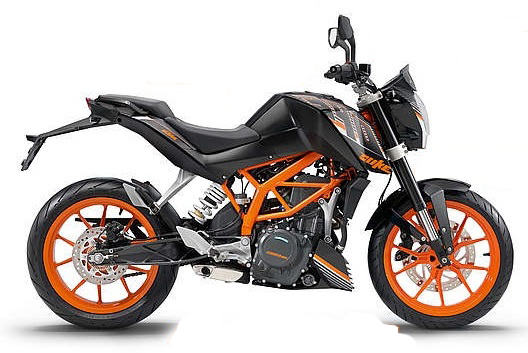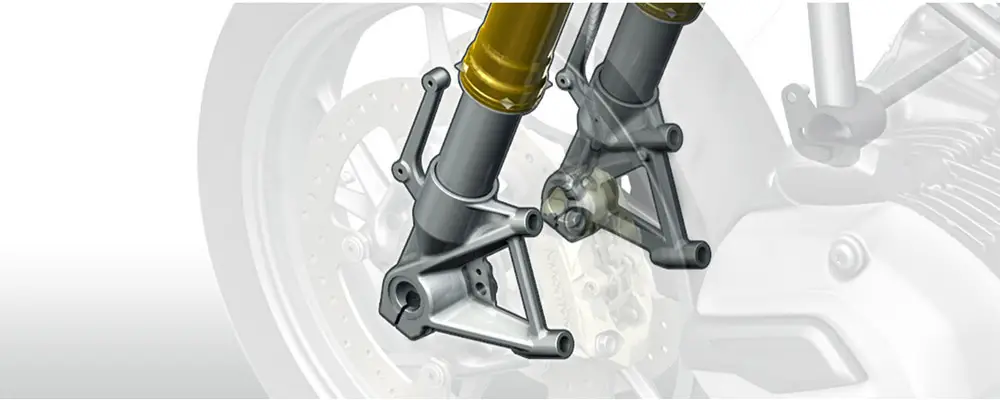What is Upside Down Fork or USD Suspension?
The term USD stands for UpSide Down. It is a telescopic fork but fitted inversely or in an upside-down position. So, in short, it’s an upside down fork. In this design, the upper tubes (fixed fork tubes) have a larger diameter than the lower tubes (immersion or slider tubes). Thus, it increases the torsional stiffness while preventing torsion in the fork bridge at the same time.

Some modern sportbikes and most adventure bikes use sliders with a spring/damper unit at the top. They are clamped to the yoke while its foundations are at the bottom. It is mainly to reduce the unsprung weight by suspending the heavier components. In this design, the yokes have clamped solid large-diameter sliders. Thus, it also improves the strength and rigidity of the components.
Design:
Manufacturers refer to the inverted system as an upside-down fork or, in short, “USD.” One disadvantage of the USD design is that the entire storage of damping oil is above the slider seal. So if the oil drains out because of leakage, damping becomes ineffective. Manufacturers use aluminum for making the Tube and Fork Bridge. Thus, it ensures that the contacting surfaces seamlessly interlock under pressure.

Additionally, the unsprung weight is not lower than the conventional fork. In USD forks, the interior immersion tubes are a smaller diameter. Besides, the manufacturers use heavy-duty steel to make them. As a result, their weight is higher than conventional aluminum or even magnesium forks. The key advantage is the long guiding of the immersion tube through the fixed tube.
Construction:
The upside-down fork uses anodized aluminum fixed fork tubes and manganese alloy steel tubes. It provides the motorcycle with sensitive response characteristics and maximum stability even under high loads. The outer tubes are torsion-resistant. The bridges guide them with a greater diameter. Greater leverage forces act on them which are very useful for off-road riding.

Manufacturers use protrusion of the fork immersion tubes to suit the motorcycle height in the front section area. Thus, for a 15mm travel, the front section can be lowered by 5mm and raised by 10mm. The upside-down suspension comes with cartridge inserts on the inside. It is a separate hydraulic piston-cylinder system. It has adjustment options for preload and compression/rebound stages. E.g. for total spring travel of 120mm, 75mm is positive while 45mm is negative.
You can set the spring tension for preload and rebound damping in 10 stages. Hence, it is not a necessity to calculate the clicks. Besides, the current setting applies at all times. Also, manufacturers use different colors to distinguish the rebound and compression stage settings.
Marzocchi, WP, and Showa are some of the world’s leading manufacturers of USD suspension.
Title image – Courtesy: BMW Motorrad
